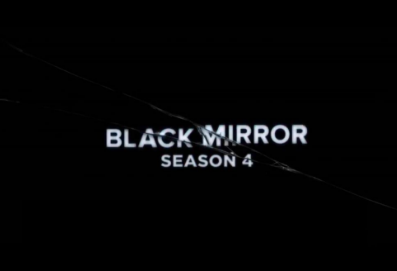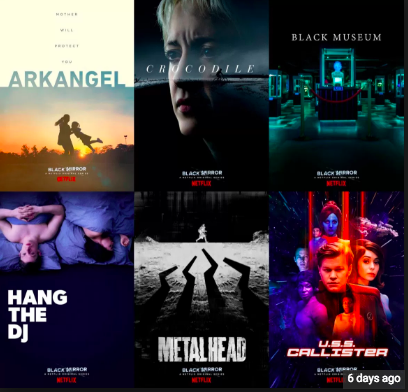Let’s Reflect on Black Mirror

Season 4 of Black Mirror aired December 29th on Netflix, to the delight of the fans, who had waited patiently for the release since it was announced earlier that month. Very little information was released about the episodes before they aired, though a season trailer was dropped to stir up hype for the series.
 The new season contains six episodes: “USS Callister”, a thrilling and chilling space adventure; “Arkangel”, a story about the dangers of helicopter parenting; “Crocodile”, where people’s memories can be played on a screen; “Hang the DJ”, a Tinder-esque love story; “Metalhead”, a black-and-white horror; and the finale “Black Museum”, which has been praised as the best episode of the season and perhaps the entire show thus far.
The new season contains six episodes: “USS Callister”, a thrilling and chilling space adventure; “Arkangel”, a story about the dangers of helicopter parenting; “Crocodile”, where people’s memories can be played on a screen; “Hang the DJ”, a Tinder-esque love story; “Metalhead”, a black-and-white horror; and the finale “Black Museum”, which has been praised as the best episode of the season and perhaps the entire show thus far.
Black Mirror is known for its frightening and often bleak portrayals of how humans coexist with technology. Sometimes it’s used to hurt others (such as in “Crocodile” and “White Christmas”) and sometimes it’s used to bring people to justice (“Shut Up and Dance”). Some episodes take place in the future, and others take place in modern day society; however, technology use remains a running theme, whether futuristic or more similar to what we have today.
However, technology isn’t necessarily the ‘antagonist’ of the series. Fans often mistook the show’s message for ‘technology is evil’, to which Charlie Brooker, the creator of the show responded “You know, the show isn’t anti-technology…it’s not a technological problem [we have], it’s a human one. That human frailty is maybe amplified by it. Technology is a tool that has allowed us to swipe around like an angry toddler.” The point of Black Mirror isn’t that technology is out to get us, but rather technology allows humans to be horrible in ways that were never possible before.















